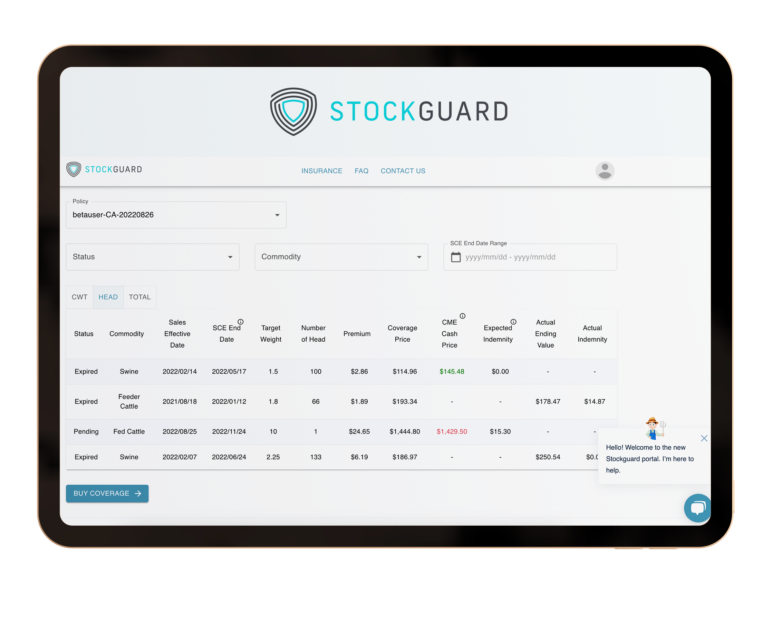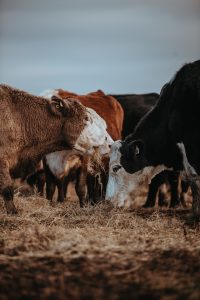Market and Industry News
Stay up to date with this week's industry news and market highlights. Also, learn more about what we're up to at Stockguard.
What's new this week?

Market Highlights
- During the week, the live cattle futures market displayed notable fluctuations amid varying demand signals. The week commenced with the futures priced at $176.975 per cwt, initially holding steady with minor gains reflecting cautious optimism among traders. As the week progressed, prices encountered downward pressure, driven possibly by a combination of market uncertainties and shifts in consumer demand. By the week’s end, the closing price had settled at $175.950 per cwt, marking a decrease of $1.025 per cwt from the opening. This downward movement suggests a market adjusting to both domestic consumption patterns and broader economic indicators that may influence future demand.
- Feeder cattle futures were more sharply affected, reflecting concerns over feed prices and market supply dynamics. Opening the week at $241.400 per cwt, the futures initially seemed stable but soon began a steady decline amidst market recalibrations. By Thursday, prices had dipped to $238.650 per cwt, a drop of $2.750 per cwt. This decline could be attributed to several factors, including rising feed costs and uncertainties in the meat supply chain, which may be influencing buyer strategies and market sentiment. The week’s activity underscored the volatility of feeder cattle prices in response to changes in the agricultural and economic landscapes.
- Corn futures opened the week robustly at $4.5700 per bushel, buoyed by initial market optimism and perhaps speculative buying. However, as the week unfolded, the prices saw a gradual pullback to close at $4.4275 per bushel. This decrease of $0.1425 per bushel could be linked to market reactions to the USDA’s latest reports on planting progress and weather conditions affecting key growing regions. Investors and farmers alike are closely monitoring these factors, as they directly impact yield forecasts and supply expectations. The fluctuation in corn prices reflects the complex interplay of market dynamics, including export demand and domestic biofuel production levels.
- Soybean futures also trended downward during this period, opening at $12.3475 per bushel and closing at $11.9275 per bushel, a significant reduction of $0.4200 per bushel. The decline was primarily driven by technical selling and adjustments in market expectations following global supply chain updates. Factors such as the pace of planting in the U.S., alongside international developments in soybean markets, particularly in major producers like Brazil, influenced trader sentiment. Additionally, changes in trade policies and currency fluctuations may have played roles in the pricing dynamics observed. The week’s end price reflects a cautious market, wary of overextending in a climate of ongoing agricultural and economic uncertainty.

Stockguard is Your Risk Management Solution. Check out our portal for daily LRP rates!


View more rates on our portal!
Sign up to receive daily LRP Rates!

Industry News
$123 Million in Agricultural Losses from Texas Panhandle Wildfires
Updates on Animal Identification and Traceability in the U.S. Cattle Industry
Winter Canola Emerges as a Promising Crop for Mid-South Farmers
USDA Confirms Beef Free from H5N1, Bolstering Market Confidence
The USDA’s recent negative test results for H5N1 in beef have reinforced market stability and consumer confidence in the safety of U.S. beef products. Former USDA Under Secretary for Food Safety, Mindy Brashears, now a professor at Texas Tech University, expressed no surprise at these findings, citing the sterility of muscle tissues where the virus is unlikely to be present. These reassuring results come amid ongoing tests and heightened precautions against cross-contamination, further solidifying the safety of beef and other animal products like milk and eggs through stringent processing standards.

Why Should You Use Livestock Risk Protection?
Uncertain feed costs, extreme weather, interest rates, and limited cattle inventory are only a few causes of market volatility. Unexpected market price drops can negatively impact your bottom line and shrink your profits. But there are ways to manage risk and protect your operation.
Unfortunately, no one can predict exactly what tomorrow’s market may bring. With LRP from Stockguard, you can create a safety net for your investment. Lock in your minimum price guarantee, but rest assured that the ceiling remains open and you’ll benefit if the market is up when you’re ready to sell your herd. Learn more today at stockguard.io
Featured Resources
LRP Portal Walkthrough
Experience the ease of Livestock Risk Protection with Stockguard! From account creation to selecting the ideal coverage for your livestock, watch now to secure your farm’s future at with Stockguard!
Safeguard your dairy operation with our Dairy Mortality Insurance,
offered in partnership with Markel Livestock Consortium. Choose from three coverage tiers to protect against accidents, extreme weather, theft, and more, ensuring the security of your valuable herd.
Cattle & Coffee Events
Request a free meeting in your area that includes dinner and drinks for you and your friends to learn all about Livestock Risk Protection.

